1875-S BF-16 |

Obverse 11
This obverse features a misplaced date with the top of a 5 in the denticles below the date.
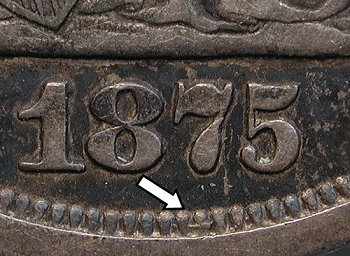

Date position with misplaced 5
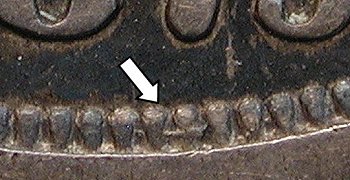

Close-up of misplaced 5 in denticles
In later die states, a thin crack develops near stars 9 and 10, to the right of Liberty’s cap. The crack can be found in various lengths and is the same one as found on the
late die state of BF-15R.
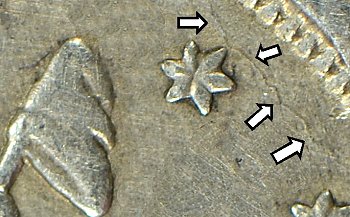

Die crack near stars 9 and 10
Date Position: M 2.5, 0.50 mm
|

Reverse J
The most notable feature of this reverse die is the widely repunched S/S mintmark. Coins with this reverse are commonly called the ‘$’ variety since the serifs are so widely separated.
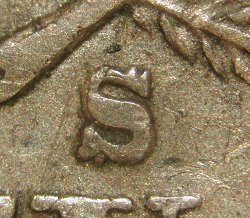

Repunched S/S – the ‘$’
An extensive series of die cracks develops slowly during its use and eventually encompasses most of the letters. The cracks are most noticeable under CENTS.




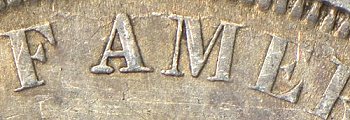

Late die state cracks
|
|
Comments: This well-documented variety is the most interesting die marriage in the entire series, and one of the most sought after by collectors. It is an
interesting die pair as a result of a clearly repunched mintmark and an easily discernable misplaced 5 in the denticles. It is also the only die marriage that exhibits significant die rotation,
with numerous different degrees of rotation (see below).
|
|
Scarcity: Although sometimes offered at a significant premium, this die marriage is the most common of all 1875-S die marriages. Coins struck with rotated
dies are scarce and generally command a modest premium. Rarity rating: R-1.
|
|
Cross reference: This die marriage is the same as FS-20-1875S-302 from the Cherrypickers’ Guide to Rare Die Varieties of United States Coins, Volume II.
|
|
Die crack progression and rotation sequence:
This is the only die pair that exhibits a significant amount of die rotation. What makes this die marriage particularly interesting is that this variety is known with many different
degrees of rotation. Extensive study of this die marriage provides an interesting story of how the die was used. By observing the growth of die cracks on the reverse, it is possible
to sequence the states of rotation. One possibility is that the dies were loose and so evenly balanced that after a counter-clockwise rotation, they rotated clockwise and did so
multiple times. An alternative theory is that the dies rotated and were later re-set by the coiner, only to rotate again several times. Although there is no way to know absolutely
what caused the rotation, the result is an interesting set of coins to study both rotation and die deterioration.
The initial mounting of the dies started with a 10 degree rotation, and the vast majority of this die marriage were struck with this orientation. Soon the reverse started to crack
and the rotating began. The greatest amount of rotation thus far observed is 80 degrees; however it is quite possible that coins with even more rotation exist.
The final die state of this reverse resulted in coins struck with significant die cracks. The die rotation for this very late die state is fixed at 15 degrees. The dies at this
stage struck a large number of coins as examples of this very late die state are readily available.
The set of images on the next page illustrate the progression of die rotation for this marriage, as sequenced using the progression of die cracks. The sequence is left to right,
top to bottom (Row 1, Row 2, Row 3, and Row 4).
 |
 |
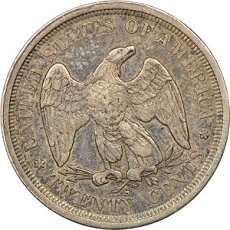

Early die state, 10-degrees
 |
 |
 |
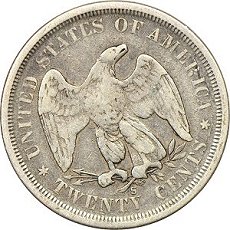

16 degrees
 |
 |
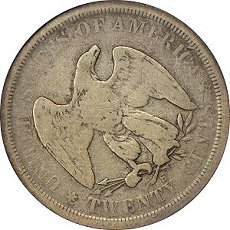

40 degrees

 |
 |
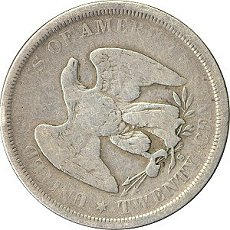

62 degrees
 |
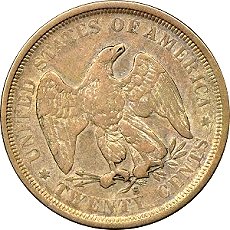

18 degrees
 |
 |
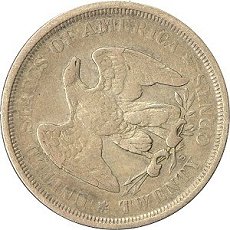

60 degrees
 |
 |
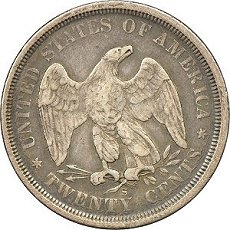

10 degrees
 |
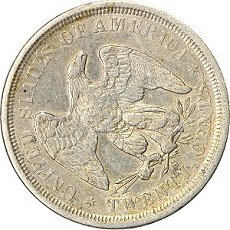

52 degrees
 |
 |
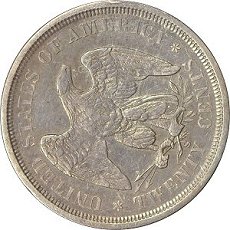

70 degrees
 |
 |
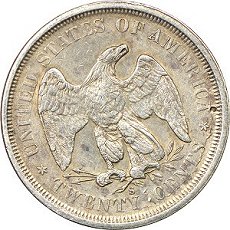

Very late die state, 15 degrees
 |
|
1875-S BF-16 - Obverse 11 |
1875-S BF-16 - Reverse J |
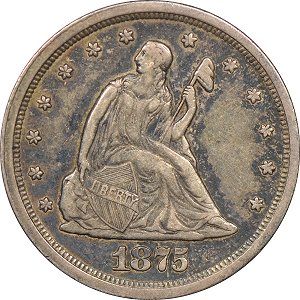
Click for full-size image |
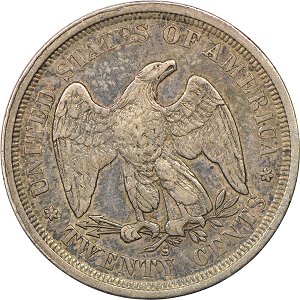
Click for full-size image
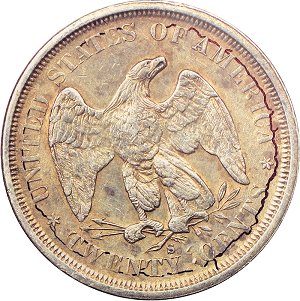
Enhanced die cracks
Click for full-size image |




















